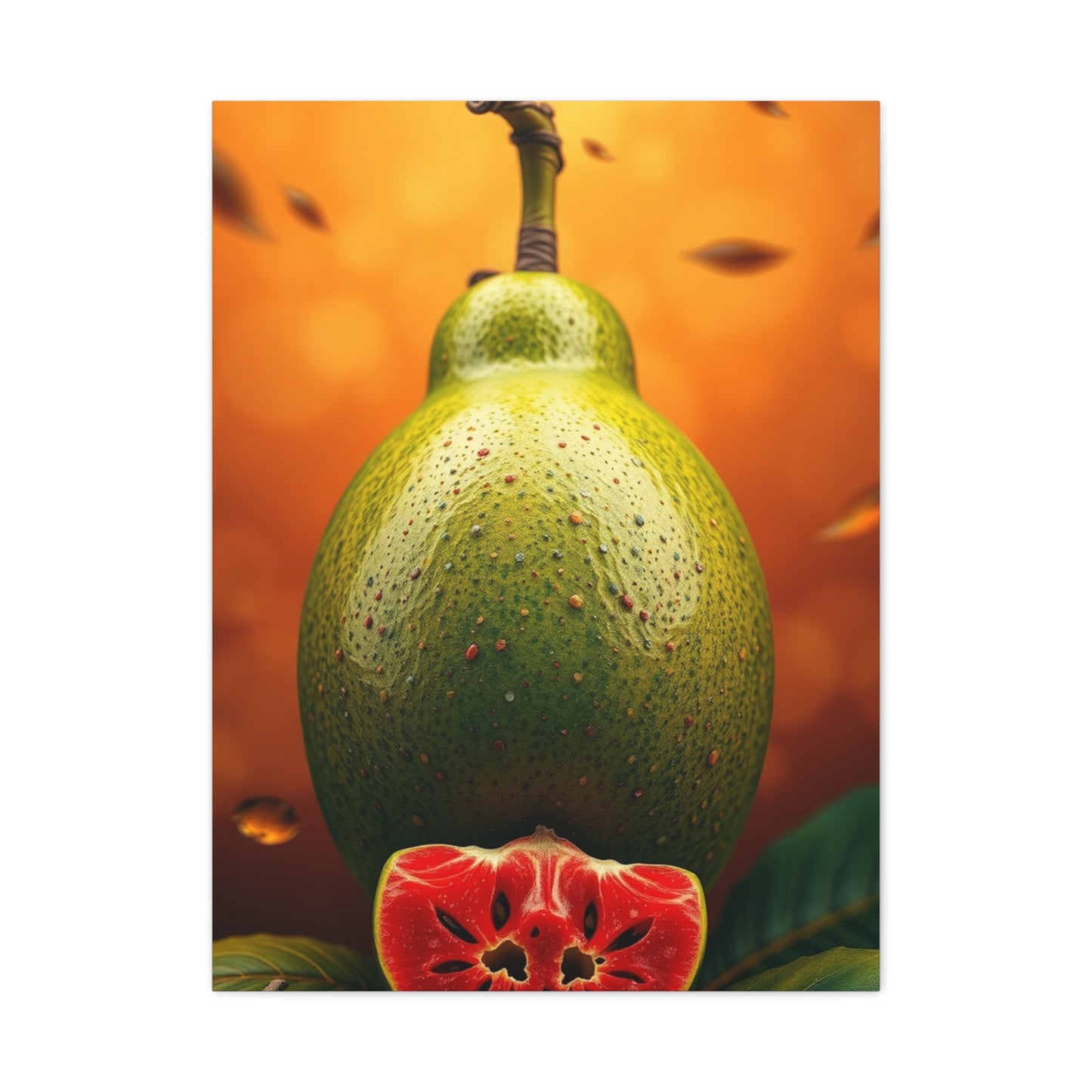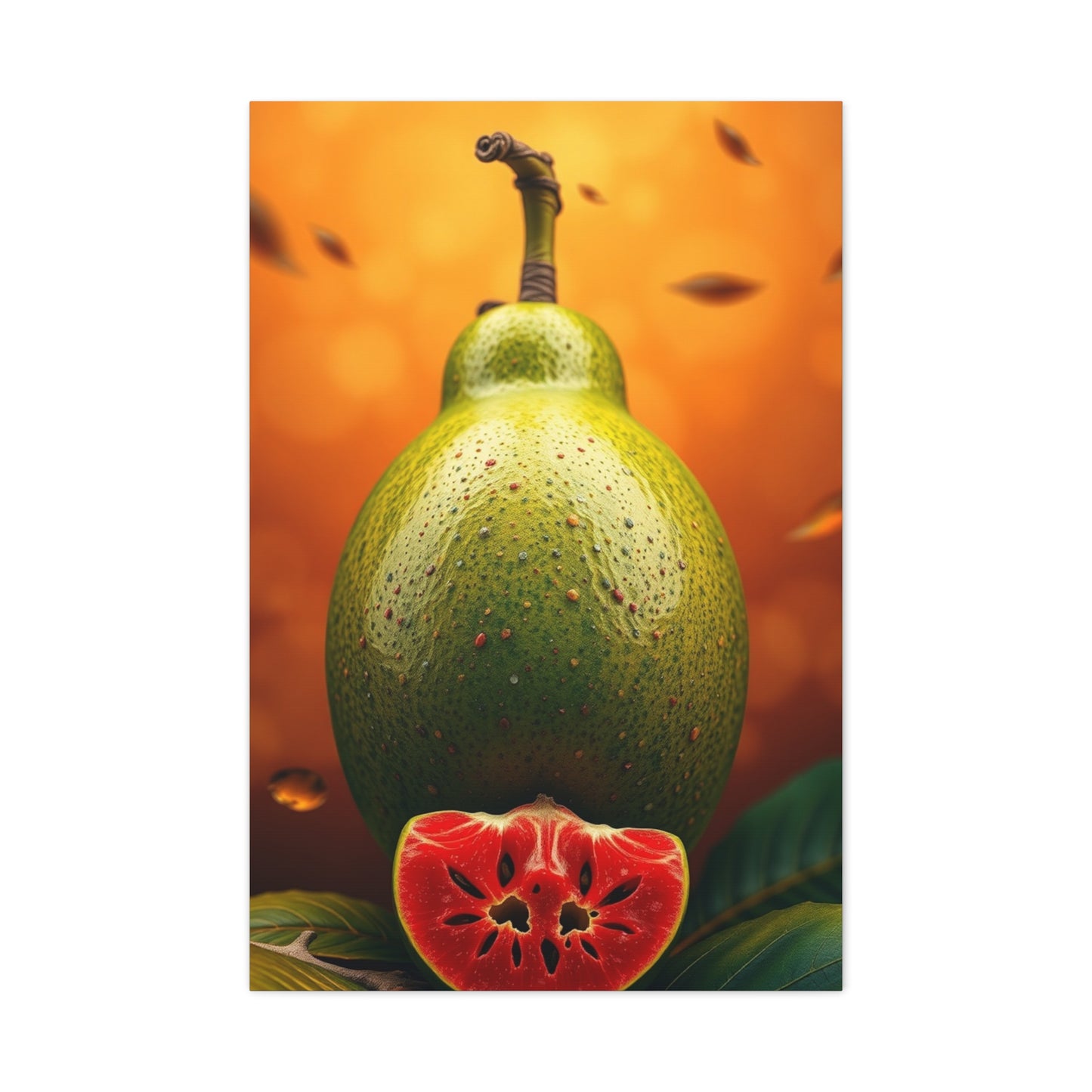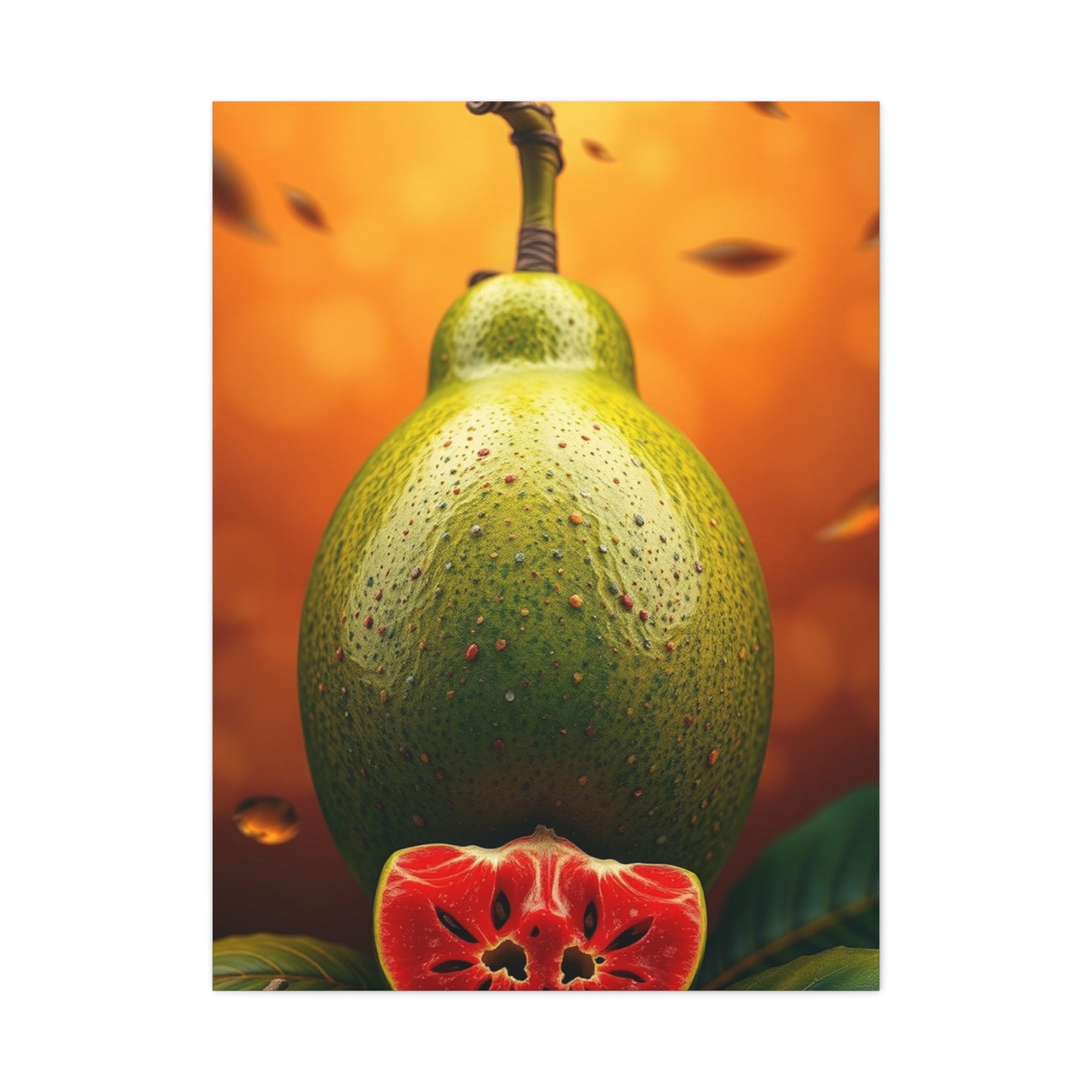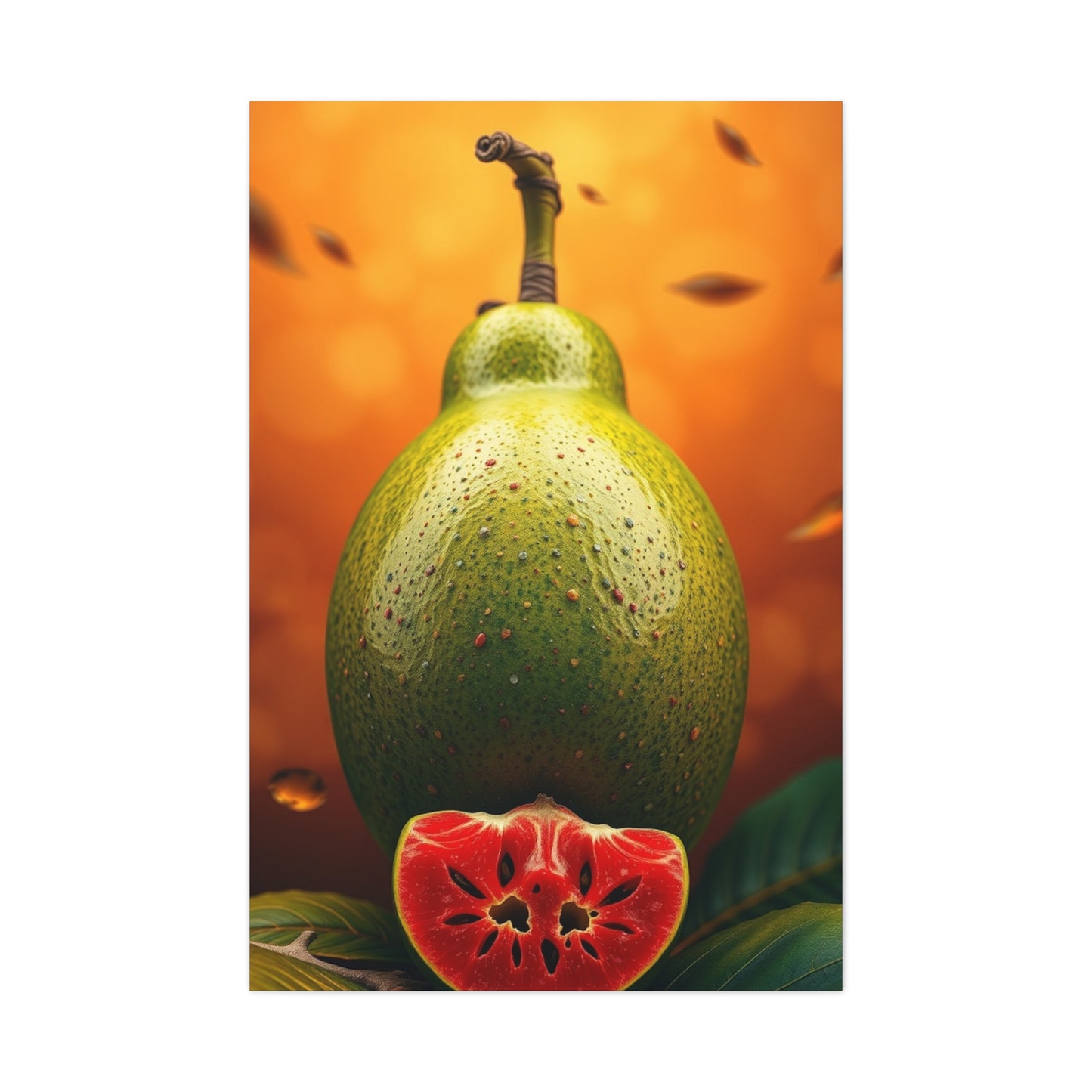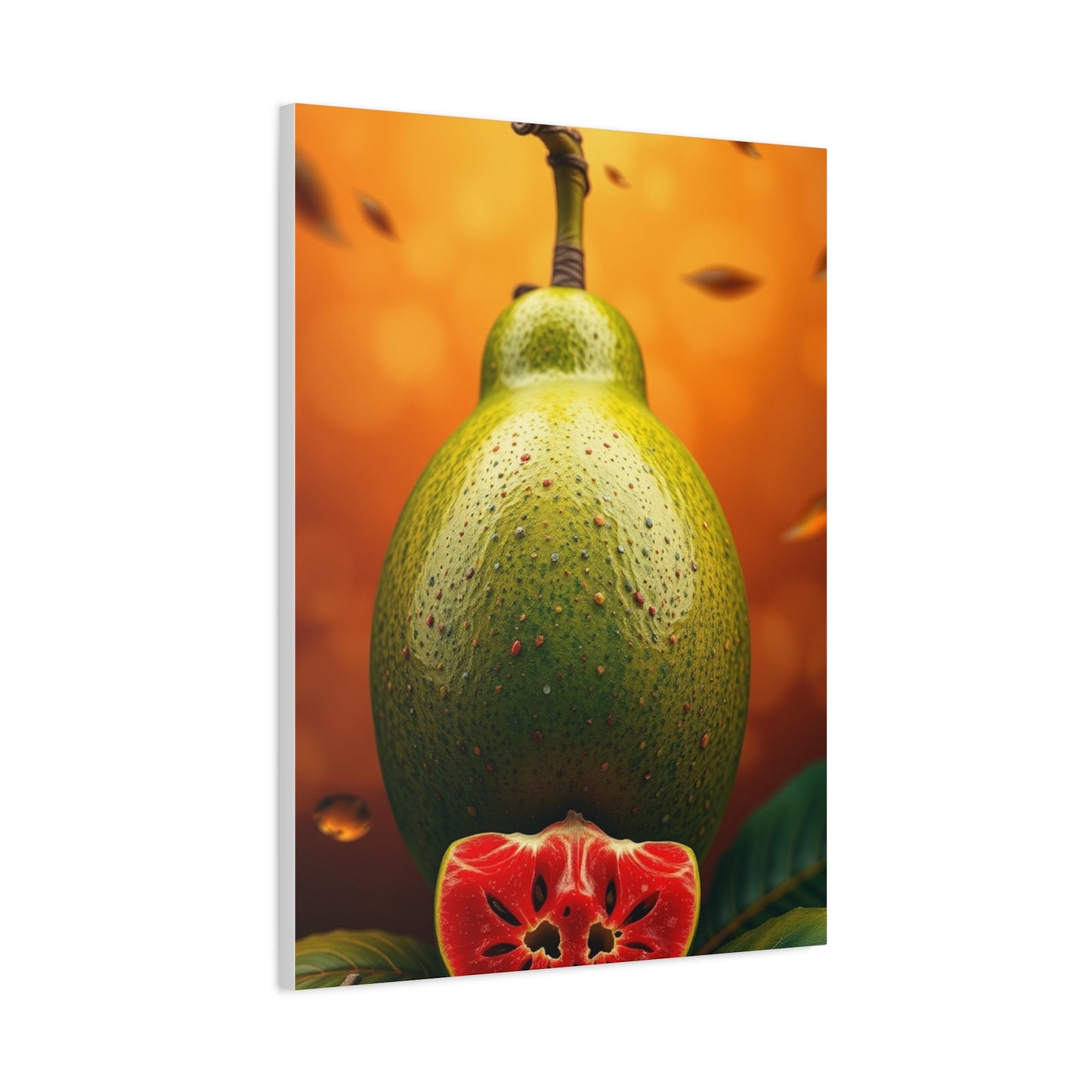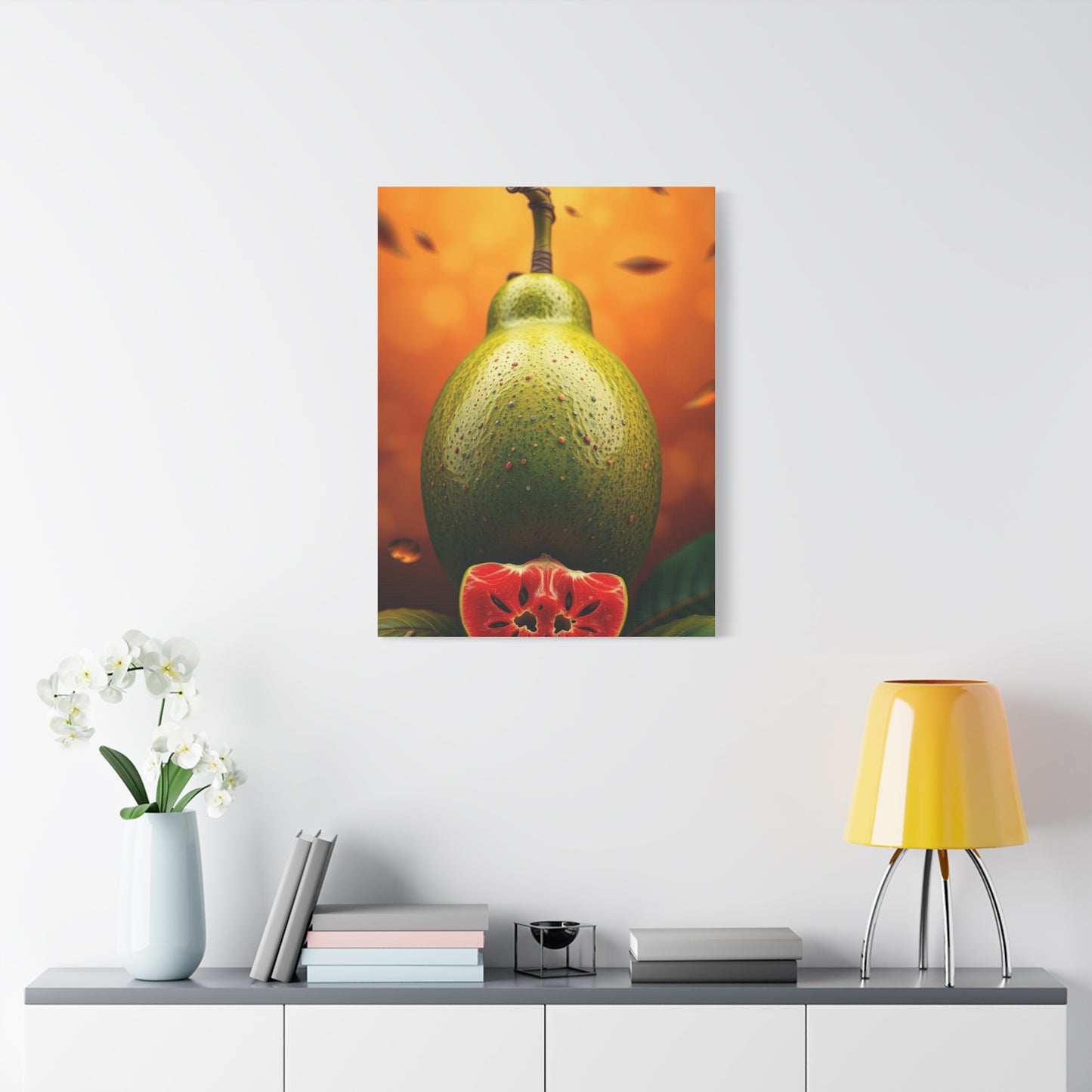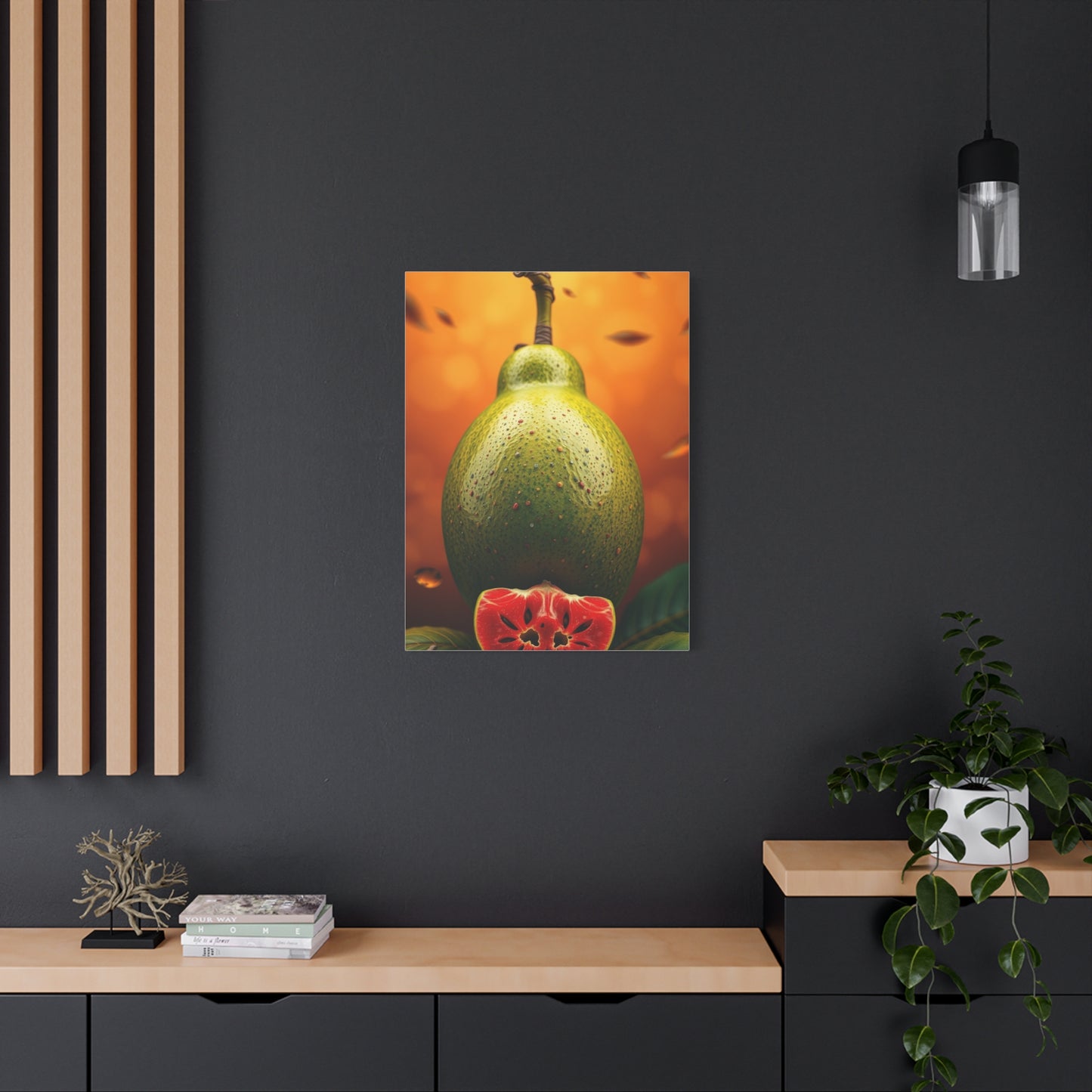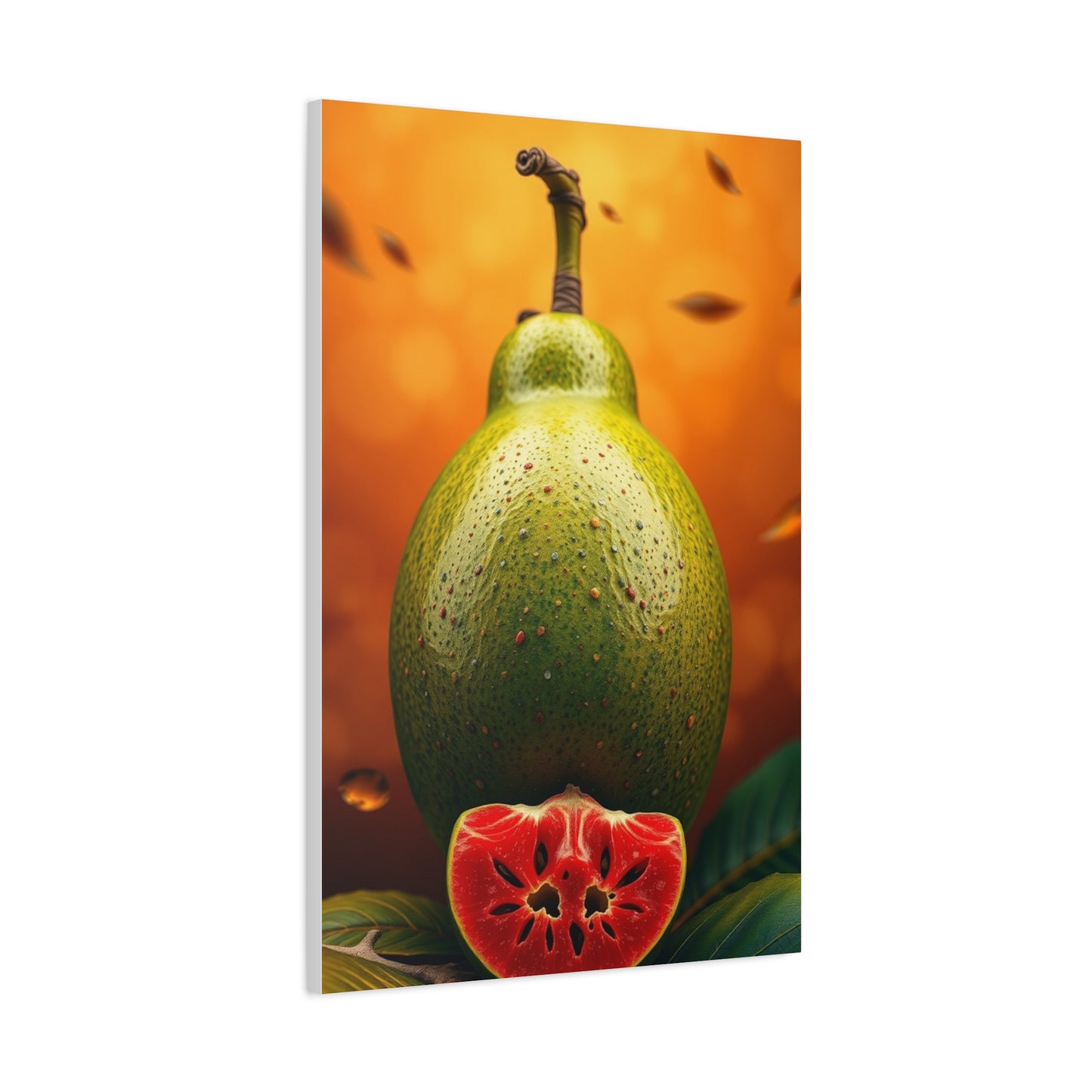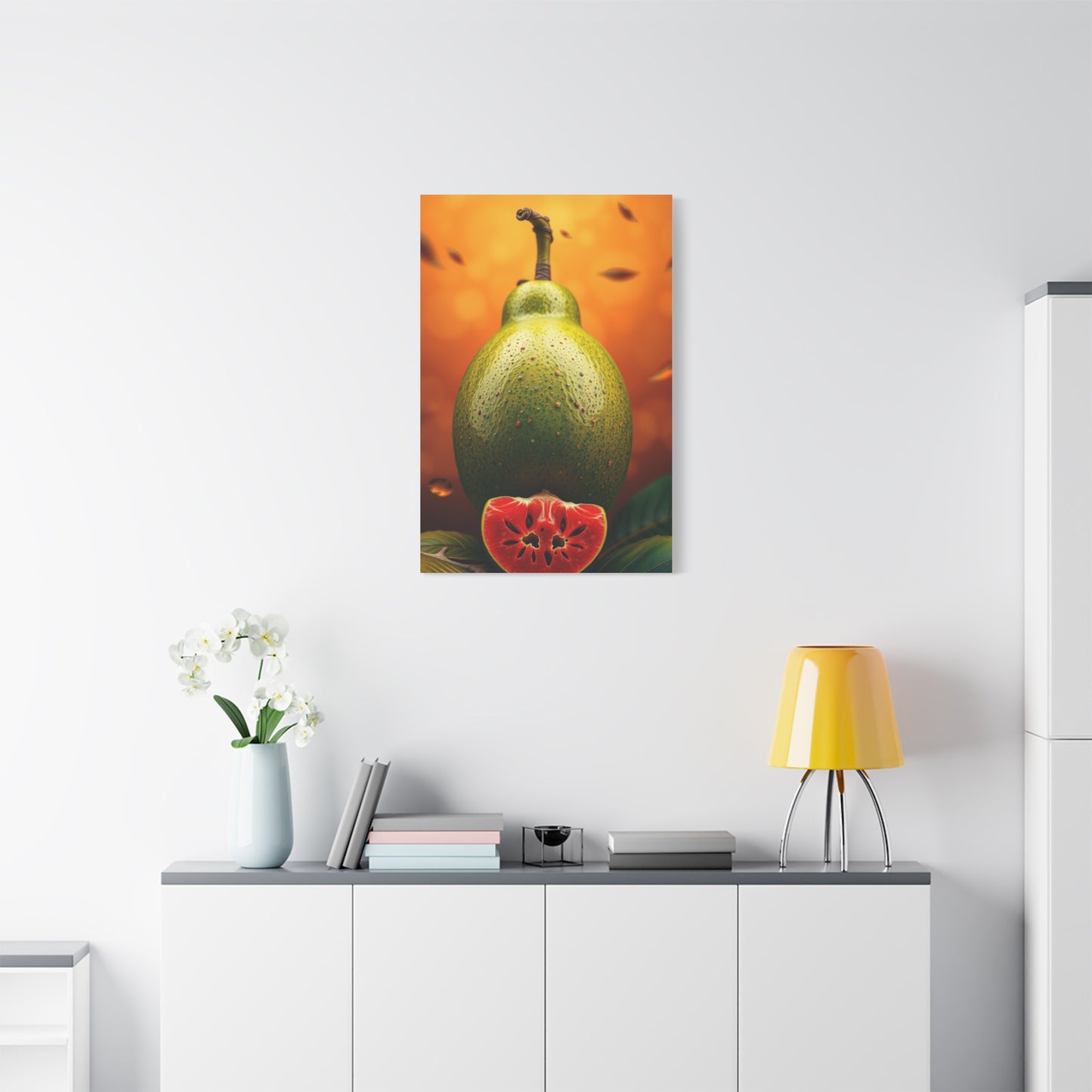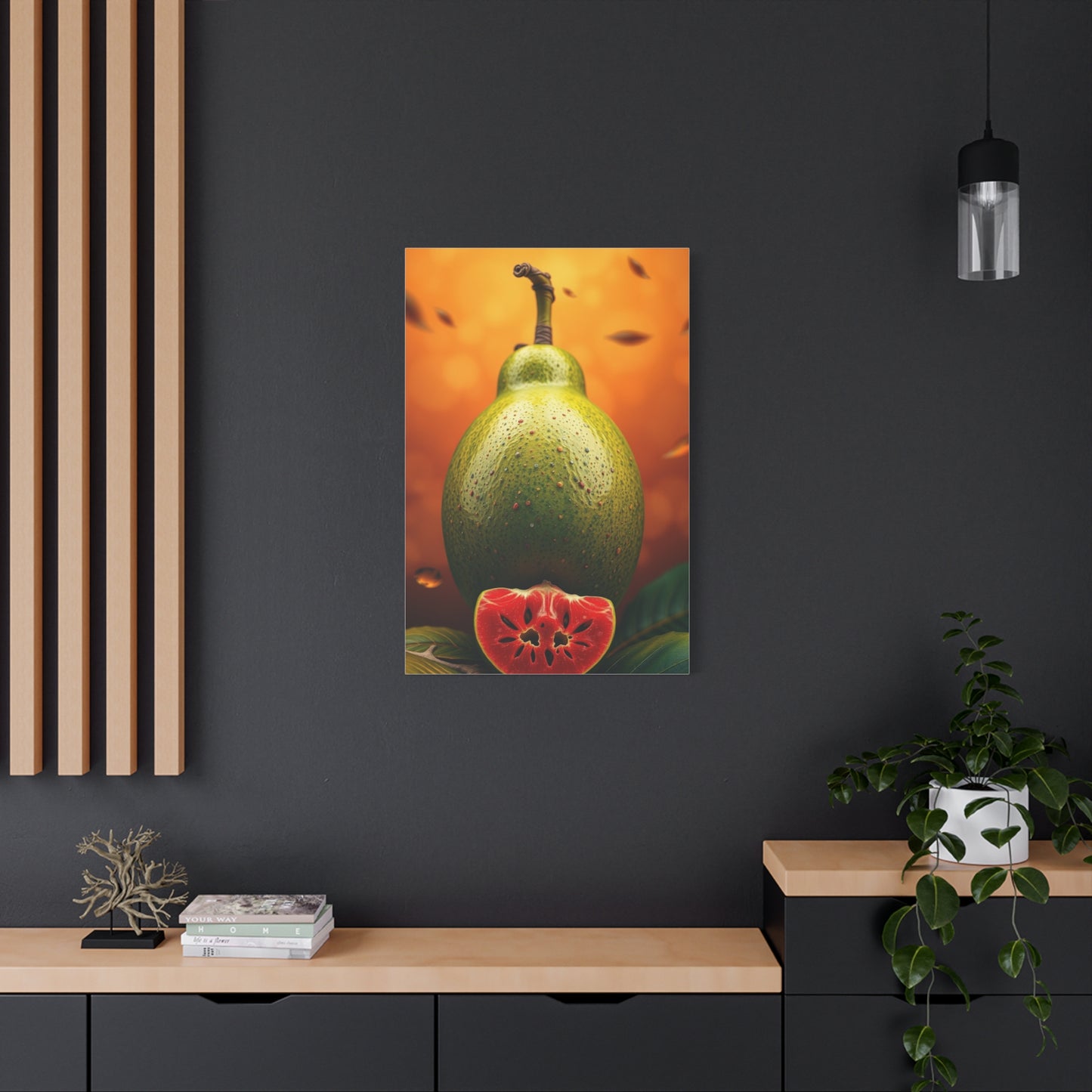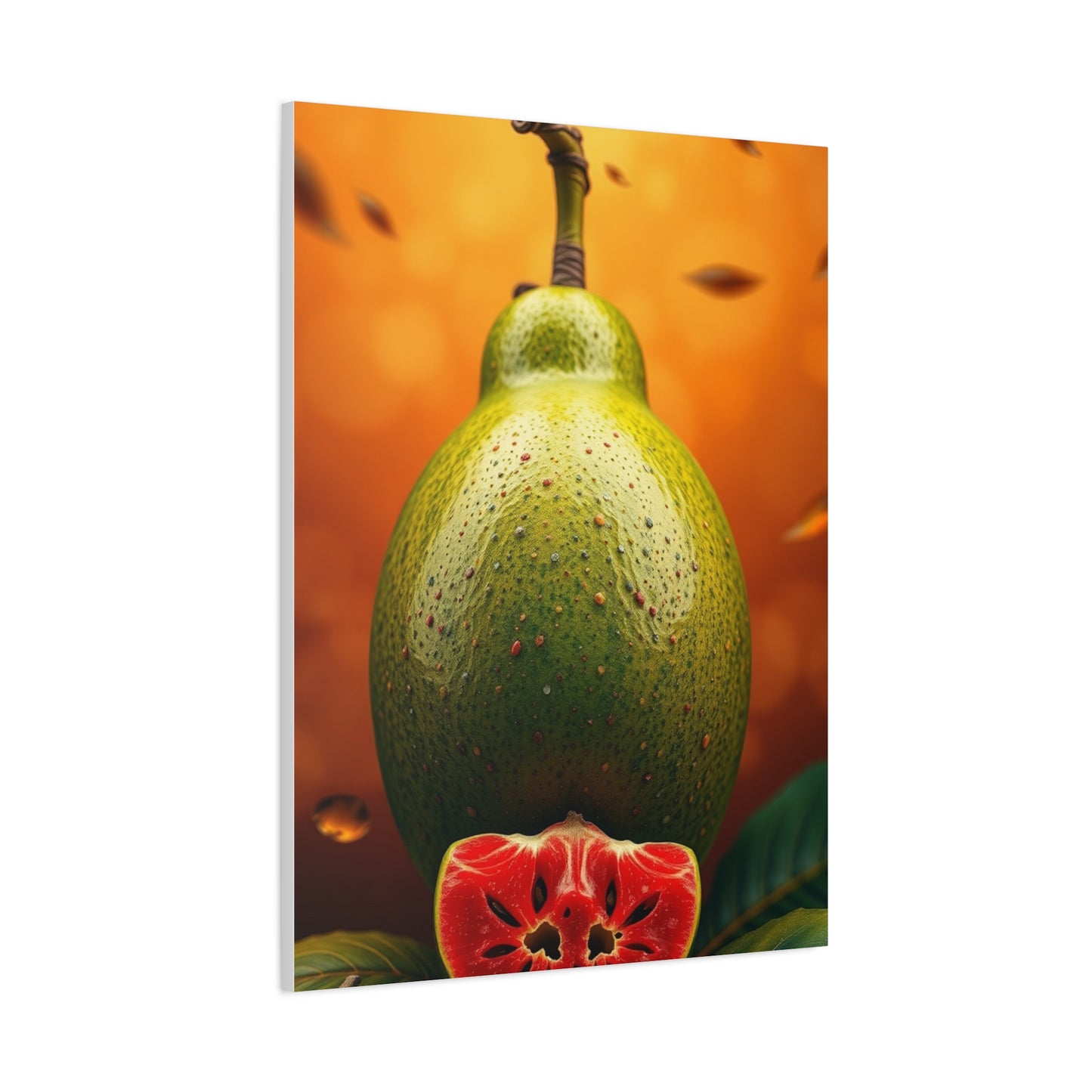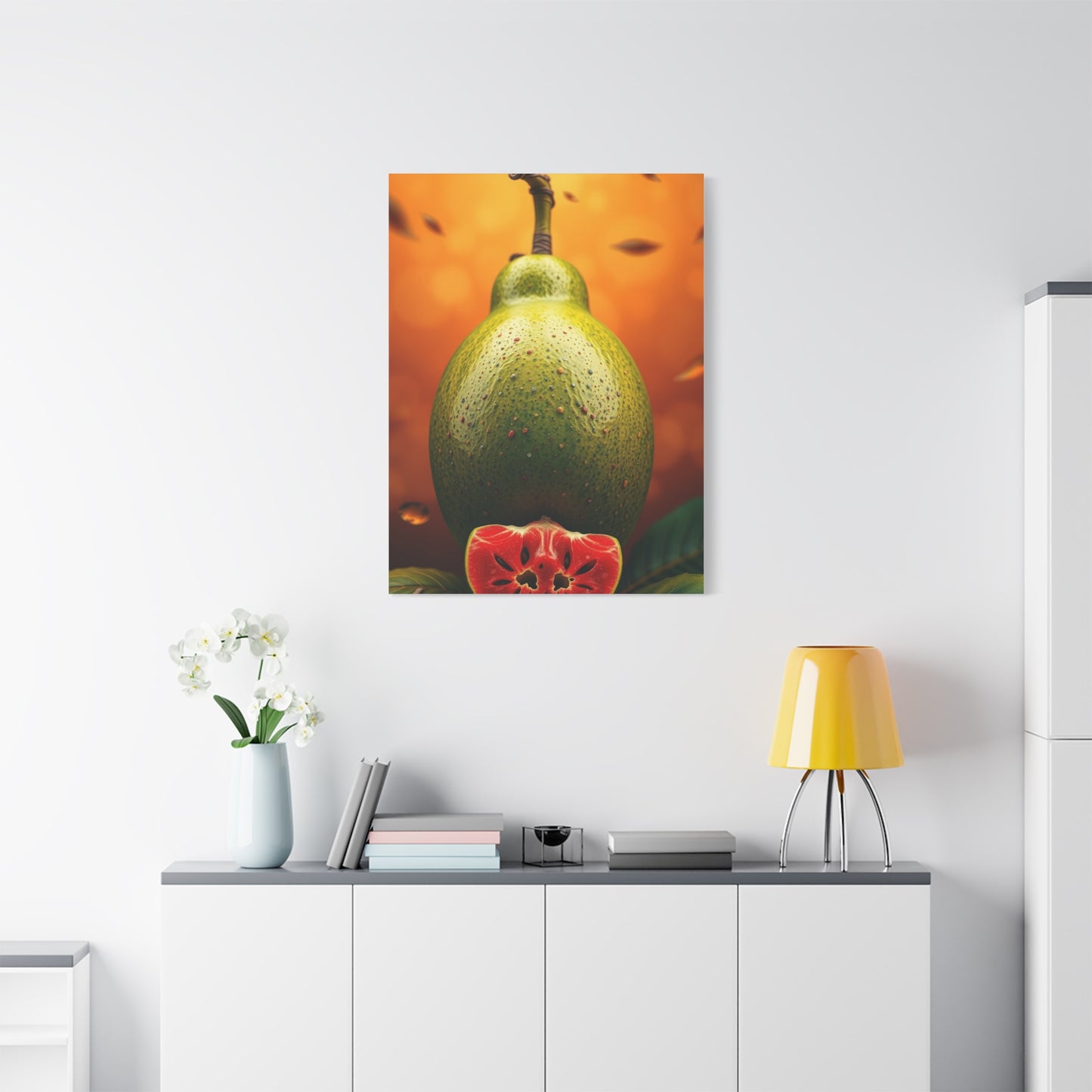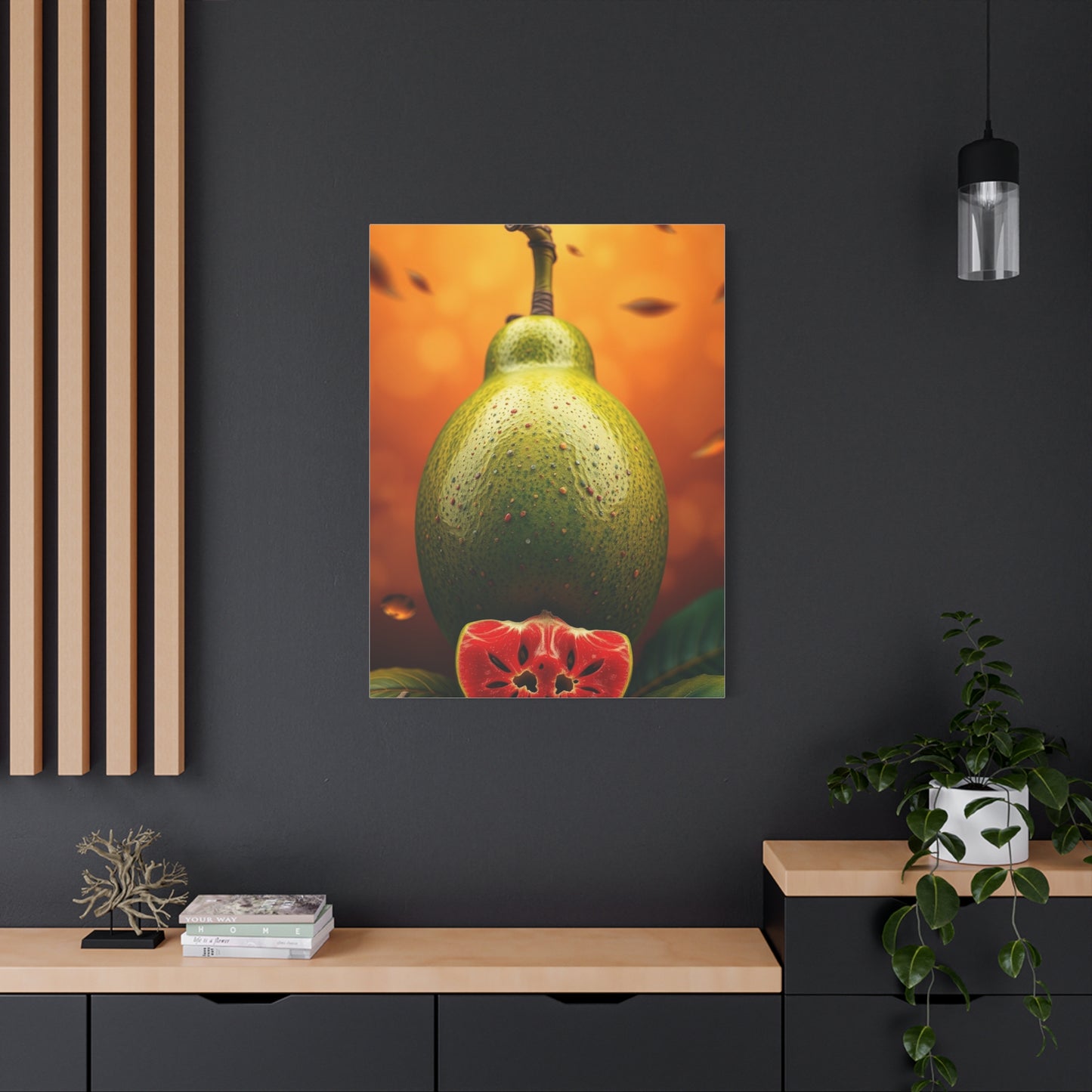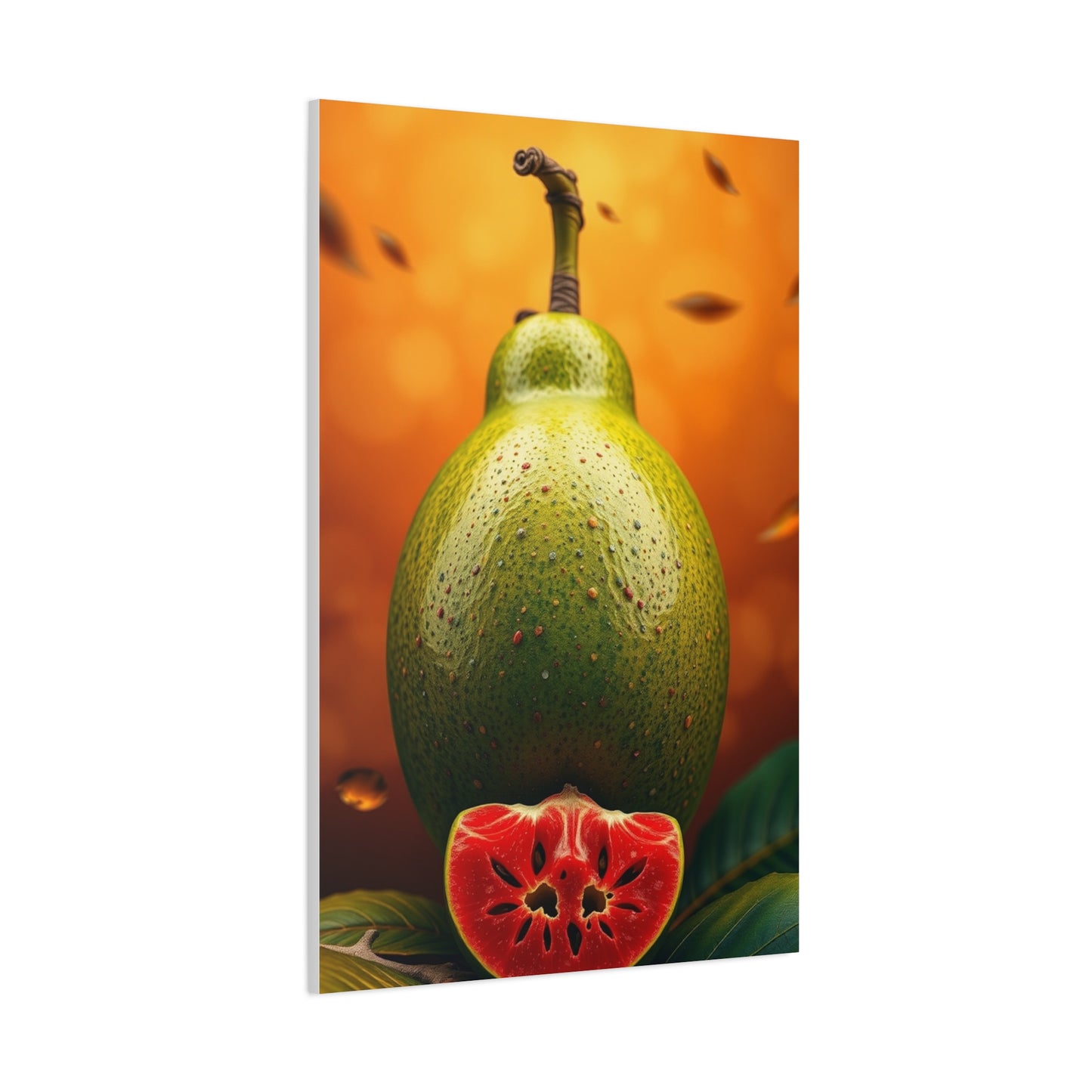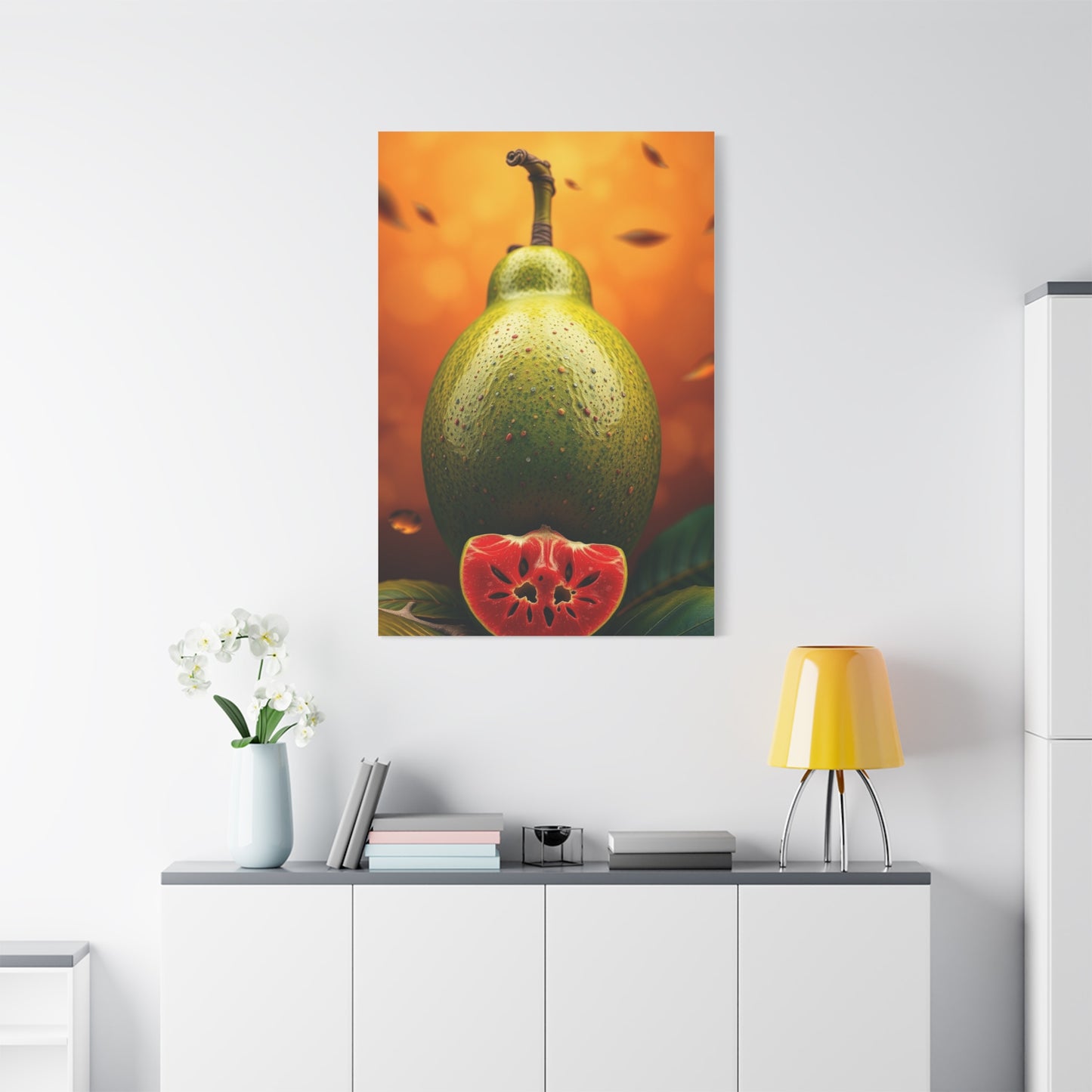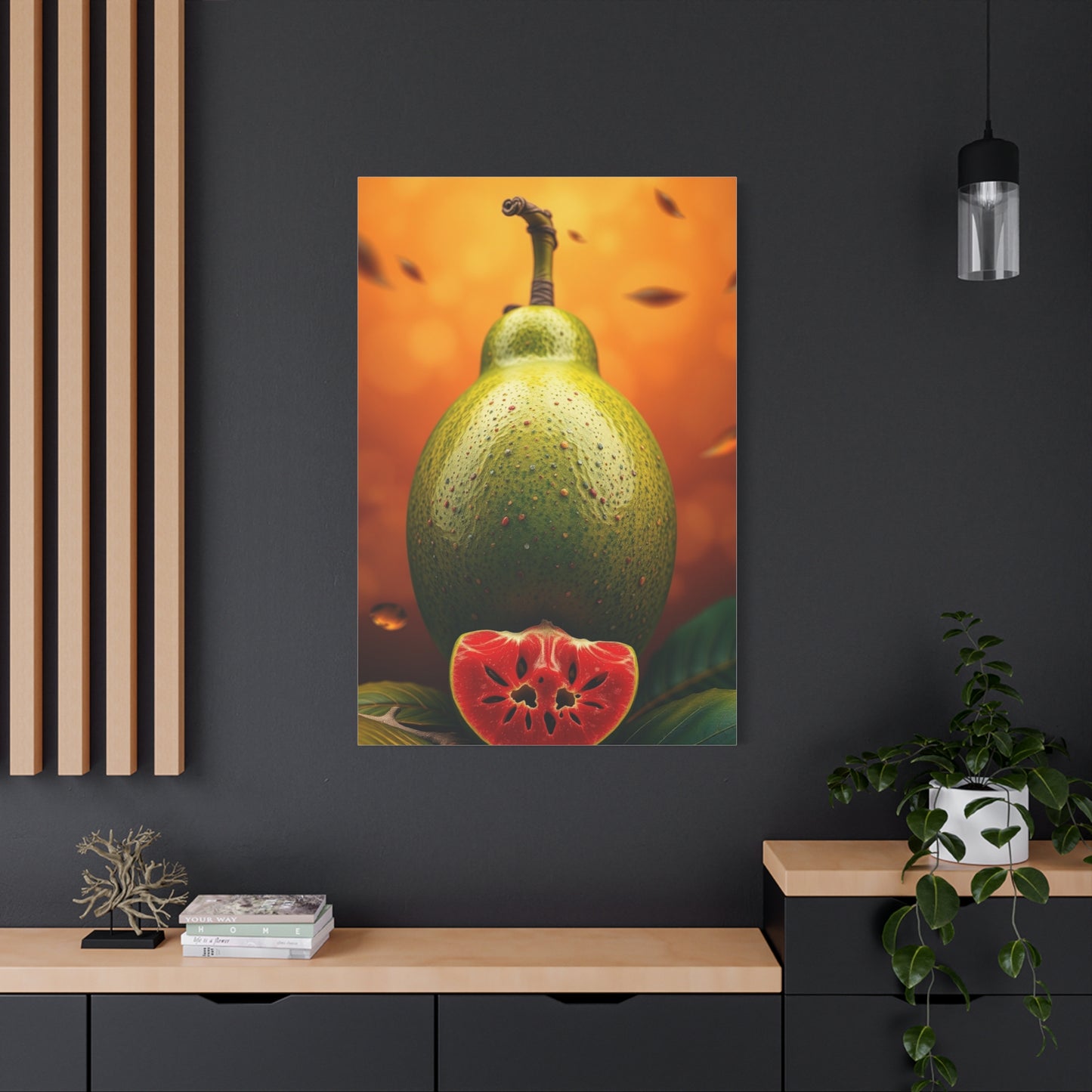The Art of Nature: How Refined Guava Expression Elevates Simplicity in Art
The vibrant world of tropical fruit artistry has captivated art enthusiasts and homeowners alike, with guava-themed wall art emerging as a particularly compelling choice for contemporary living environments. This distinctive art form combines the natural beauty of tropical fruits with sophisticated artistic techniques, creating pieces that breathe life into any room while maintaining an air of refined elegance.
Guava wall art represents more than mere decoration; it embodies a celebration of nature's bounty through artistic expression. The rich pink and coral hues of ripe guava, combined with the lush green tones of its foliage, create a color palette that is both energizing and soothing. Artists who specialize in this medium understand the delicate balance required to capture the essence of tropical paradise while maintaining the sophisticated aesthetic that modern homeowners demand.
The appeal of guava-inspired canvas art lies in its versatility and ability to transform ordinary walls into focal points of natural beauty. Whether rendered in photorealistic detail or interpreted through abstract expressionism, guava wall art brings a sense of warmth and vitality that can enliven even the most neutral color schemes. The fruit's unique characteristics, from its distinctive shape to its gradient of colors, provide artists with endless opportunities for creative interpretation.
Contemporary artists working with guava themes often explore various techniques to capture the fruit's essence. Some focus on hyperrealistic representations that showcase every detail of the fruit's texture and coloring, while others take a more stylized approach, using bold brushstrokes and simplified forms to convey the guava's energy and vibrancy. These different approaches ensure that there is a guava wall art piece suitable for every aesthetic preference and home decor style.
The cultural significance of guava in tropical regions adds depth and meaning to these artistic representations. In many cultures, guava symbolizes abundance, health, and the sweetness of life, making guava wall art not just visually appealing but also emotionally resonant. This symbolic richness transforms simple fruit imagery into powerful statements about joy, prosperity, and connection to nature.
Modern printing techniques and canvas preparation methods have elevated guava wall art to museum-quality standards. High-resolution digital printing on premium canvas materials ensures that every subtle color variation and texture detail is preserved, creating pieces that rival traditional oil paintings in their visual impact and longevity. These technological advances have made sophisticated guava wall art accessible to a broader audience while maintaining the artistic integrity of the original works.
The Psychology of Tropical Color Palettes in Home Environments
The psychological impact of color in home environments has been extensively studied, and tropical fruit colors, particularly those found in guava wall art, have been shown to create specific emotional responses that can enhance overall well-being. The warm coral and pink tones characteristic of ripe guava evoke feelings of comfort, nurturing, and optimism, while the complementary green hues promote feelings of balance and tranquility.
Research in environmental psychology suggests that exposure to natural imagery and colors can reduce stress levels and improve mood. Guava wall art, with its inherent connection to nature and tropical abundance, serves as a visual reminder of natural beauty and can help create a more positive and energizing atmosphere in living areas. The organic shapes and natural color variations found in guava imagery provide a welcome contrast to the geometric lines and artificial materials that dominate many modern home environments.
Color therapists have long recognized the beneficial effects of coral and pink tones, which are prominent in guava wall art. These colors are associated with emotional healing, self-love, and compassion, making them ideal choices for bedrooms, meditation areas, or any room where relaxation and emotional well-being are priorities. The gentle warmth of these hues can help create a sense of security and comfort, particularly important in today's fast-paced world.
The green elements typically present in guava wall art contribute to the overall psychological benefits by providing visual rest and promoting feelings of growth and renewal. Green is universally associated with nature, healing, and balance, making it an excellent choice for home environments where occupants seek to create a harmonious and restorative atmosphere. The combination of warm coral-pink tones with refreshing greens creates a balanced color scheme that is both energizing and calming.
Studies have shown that artwork featuring natural subjects, such as guava wall art, can improve concentration and creativity. The organic forms and natural color variations provide visual interest without being overwhelming, allowing the mind to relax while remaining engaged. This makes guava wall art particularly suitable for home offices, study areas, or creative workspaces where mental clarity and inspiration are essential.
The tropical associations of guava imagery can also trigger positive memories and associations with vacation experiences, natural environments, and feelings of freedom and relaxation. This psychological benefit extends beyond the immediate visual impact, contributing to a sense of well-being and contentment that can positively influence daily life and stress management.
Contemporary Canvas Techniques for Fruit-Themed Artwork
Modern canvas art techniques have revolutionized the creation and presentation of fruit-themed artwork, with guava wall art benefiting significantly from these advances. Contemporary artists employ a diverse range of methods to capture the essence of tropical fruits, from traditional oil and acrylic painting techniques to innovative mixed-media approaches that incorporate texture and dimensional elements.
Layered glazing techniques allow artists to build up the complex color variations found in ripe guava, creating depth and luminosity that makes the fruit appear almost three-dimensional on the canvas. This method involves applying thin, translucent layers of paint, each adding to the overall richness and complexity of the final image. The result is guava wall art that captures the natural translucency and inner glow of the actual fruit.
Impasto techniques, where paint is applied thickly to create texture, are particularly effective for creating guava wall art that emphasizes the fruit's natural surface variations. Artists can build up areas of thick paint to simulate the slightly rough texture of guava skin or create smooth, flowing areas that represent the fruit's flesh. This dimensional quality adds tactile interest to the artwork and creates shadows and highlights that change throughout the day as lighting conditions vary.
Digital art creation has opened new possibilities for guava wall art, allowing artists to experiment with color combinations and compositions that might be difficult or impossible to achieve with traditional media. Digital techniques enable precise color matching and gradation, perfect for capturing the subtle color transitions found in guava from the pale green of unripe fruit to the deep coral of fully mature specimens.
Mixed-media approaches combine traditional painting techniques with collage elements, incorporating real textures and materials that relate to the tropical theme. Some contemporary artists include elements like dried leaves, textured papers, or even actual fruit seeds to create multi-sensory guava wall art pieces that engage viewers on multiple levels.
Photorealistic techniques have been refined to create guava wall art that is nearly indistinguishable from photography. These detailed representations focus on capturing every nuance of light and shadow, every color variation, and every textural detail. The result is artwork that celebrates the natural beauty of guava in its most recognizable form while demonstrating the artist's technical skill and attention to detail.
Abstract interpretations of guava themes allow for more personal and emotional expression while maintaining the essential character of the fruit. These pieces might focus on color relationships, energy, or the feeling of tropical abundance rather than literal representation. Such approaches create guava wall art that complements contemporary home decor while providing opportunities for personal interpretation and emotional connection.
Seasonal Variations and Their Artistic Interpretations
The seasonal cycle of guava growth and ripening provides artists with a rich source of inspiration for creating varied and dynamic wall art collections. Each stage of the fruit's development offers unique visual characteristics that can be captured and interpreted in different artistic styles, from the fresh green promise of young fruit to the full coral blush of perfect ripeness.
Early season guava, with its pale green coloring and firm texture, represents potential and growth. Artists often interpret this stage with cooler color palettes emphasizing greens and yellows, creating guava wall art that conveys freshness and anticipation. The clean lines and simplified forms of young guava make it ideal for minimalist artistic interpretations that focus on shape and color relationships rather than complex textural details.
Mid-season guava shows the beginning of color transformation as the fruit starts to develop its characteristic pink and coral tones. This transitional stage offers artists opportunities to explore gradient techniques and color blending, creating guava wall art that captures the dynamic process of ripening. The subtle color variations during this phase can be interpreted through various artistic styles, from impressionistic treatments that emphasize the changing light and color to more graphic approaches that celebrate the geometric patterns created by the fruit's natural markings.
Peak season guava, with its full coral coloration and maximum sweetness, provides the most dramatic subject matter for wall art. The intense colors and rich textures of fully ripe guava inspire bold artistic treatments that make strong visual statements. Artists working with peak season themes often employ saturated color palettes and dynamic compositions that convey the abundance and energy of tropical harvest time.
Late season interpretations might focus on the contrast between ripe and overripe fruit, exploring themes of abundance, harvest, and the natural cycle of growth and decay. These more contemplative approaches to guava wall art can create sophisticated pieces that invite deeper reflection on natural processes and the passage of time.
Seasonal collections of guava wall art allow homeowners to rotate their decor throughout the year, keeping their living environments fresh and dynamic. A series of pieces showing guava in different stages of development can create visual interest and provide opportunities to adjust the room's color impact according to seasonal preferences and lighting conditions.
The artistic interpretation of seasonal variations also allows for the creation of educational wall art that can be particularly valuable in family homes. Children can learn about natural cycles and fruit development while enjoying the visual beauty of the artwork, making guava wall art both decorative and informative.
Cultural Significance and Symbolic Meanings in Tropical Art
Guava wall art carries deep cultural significance that extends far beyond its visual appeal, incorporating symbolic meanings that have been developed over centuries in tropical cultures around the world. Understanding these cultural associations adds layers of meaning to guava-themed artwork and can enhance the emotional and spiritual impact of these pieces in home environments.
In many Latin American cultures, guava represents prosperity and abundance, making guava wall art a symbol of good fortune and financial well-being. The fruit's association with fertility and growth has made it a popular subject for artwork intended to promote positive energy and success in the home. These cultural meanings transform simple fruit imagery into powerful talismans that can inspire confidence and optimism in daily life.
Caribbean cultures have long celebrated guava as a symbol of island life and tropical paradise. Guava wall art in this context represents escape from the stresses of modern life, connection to natural rhythms, and the joy of simple pleasures. The cultural association with relaxation and leisure makes guava-themed artwork particularly popular in bedrooms, vacation homes, and meditation rooms.
Asian cultures that cultivate guava often associate the fruit with longevity and health. The high vitamin C content and medicinal properties of guava have made it a symbol of wellness and vitality. Guava wall art inspired by these cultural associations might emphasize the fruit's connection to health and healing, creating pieces that promote well-being and positive energy in healing environments or wellness-focused homes.
Indigenous cultures of tropical regions have developed complex symbolic systems around local fruits, including guava. These traditional meanings often relate to seasonal cycles, agricultural practices, and spiritual beliefs. Contemporary artists drawing on these cultural sources create guava wall art that honors traditional knowledge while making it accessible to modern audiences.
The colonial history of many guava-growing regions has also influenced the cultural significance of the fruit in art. Some contemporary artists explore themes of cultural identity, globalization, and the intersection of traditional and modern life through guava imagery. These pieces create opportunities for cultural dialogue and reflection on the complex relationships between local traditions and global influences.
Modern interpretations of guava symbolism often focus on themes of sustainability, organic living, and connection to nature. Guava wall art in this context serves as a reminder of the importance of environmental consciousness and the value of natural foods and traditional agricultural practices. These contemporary symbolic interpretations make guava artwork relevant to current environmental and social concerns.
Color Theory Applications in Tropical Fruit Artwork
The application of color theory principles in guava wall art creation requires deep understanding of how tropical fruit colors interact with various home decor schemes and lighting conditions. The natural color palette of guava, ranging from pale green through yellow to deep coral and pink, provides artists with a rich foundation for exploring color relationships and creating visually compelling artwork.
Complementary color schemes utilizing the natural coral and pink tones of ripe guava paired with various shades of green create dynamic visual tension that energizes any room. Artists skilled in color theory can manipulate these complementary relationships to create guava wall art that either harmonizes with existing decor or provides dramatic contrast as a focal point. The intensity of these complementary relationships can be adjusted through saturation levels and value contrasts to achieve the desired visual impact.
Analogous color schemes based on the yellow-orange-red spectrum found in guava coloration create harmonious and soothing artwork that integrates easily with warm-toned decor schemes. These approaches to guava wall art emphasize unity and flow, creating pieces that contribute to calm and comfortable environments. The subtle variations within analogous schemes allow for sophisticated color play that rewards close viewing while maintaining overall harmony.
Monochromatic approaches to guava wall art explore the full range of values and saturations within a single color family. Pink or coral monochromatic pieces can create elegant and sophisticated artwork that makes subtle yet impactful statements. These approaches are particularly effective in minimalist or contemporary decor schemes where color restraint is valued but visual interest is still desired.
Triadic color schemes incorporating the coral-pink of guava with complementary colors create vibrant and energetic artwork that can serve as the centerpiece of room design. These more complex color relationships require careful balance to avoid visual chaos while maximizing the dynamic potential of the color combinations. Skilled artists can create guava wall art that uses triadic schemes to create movement and energy while maintaining visual coherence.
Temperature contrast between the warm tones of ripe guava and cooler background colors can create depth and dimension in wall art. These temperature relationships help to push the fruit imagery forward visually while creating atmospheric effects that enhance the overall composition. Understanding color temperature is crucial for creating guava wall art that has proper visual weight and presence in room settings.
Seasonal color adaptations allow guava wall art to harmonize with changing decor throughout the year. Cooler interpretations might emphasize the green and yellow aspects of the fruit for spring and summer display, while warmer, more saturated pieces highlighting coral and pink tones might be more appropriate for fall and winter environments.
Mixed Media Approaches to Fruit-Themed Wall Decor
Contemporary mixed media techniques have expanded the possibilities for creating engaging and textured guava wall art that goes beyond traditional painting methods. These approaches combine various materials and techniques to create multi-dimensional pieces that engage multiple senses and provide rich visual experiences that change with viewing angle and lighting conditions.
Collage techniques incorporating real organic materials create guava wall art with authentic textural elements that reference the natural source of the imagery. Artists might include dried guava leaves, bark textures, or even preserved fruit elements to create pieces that bridge the gap between art and nature. These mixed media approaches create conversation pieces that invite close examination and tactile exploration.
Fabric incorporation allows artists to simulate the various textures associated with guava cultivation and consumption. Burlap might represent agricultural elements, while silk or satin could evoke the smooth flesh of the fruit. These fabric elements add dimensional interest and create opportunities for playing with light reflection and absorption in ways that traditional paint cannot achieve.
Paper layering techniques create guava wall art with dimensional qualities that cast shadows and create depth effects. Handmade papers with organic textures can simulate fruit skin, while translucent materials might represent the fruit's flesh. These layered approaches create artwork that changes appearance throughout the day as lighting conditions shift.
Metal leaf applications can add luxury and sophistication to guava wall art while creating dramatic light-catching effects. Gold or copper leafing might highlight certain elements of the fruit imagery, creating focal points and adding precious material qualities that elevate the overall impact of the piece. These techniques are particularly effective for creating guava wall art suitable for formal dining rooms or sophisticated living areas.
Sculptural elements integrated into the canvas surface create three-dimensional guava wall art that blurs the line between painting and sculpture. These might include carved fruit elements, molded textures, or constructed dimensional forms that extend from the picture plane. Such approaches create dramatic shadow effects and provide multiple viewing experiences as observers move around the piece.
Digital print integration allows artists to combine photographic elements with traditional media, creating guava wall art that incorporates realistic imagery alongside painterly interpretations. This hybrid approach can create surreal or hyperreal effects that challenge perception and create unique artistic statements about the relationship between nature and artistic interpretation.
Lighting Considerations for Displaying Tropical Artwork
Proper lighting is crucial for maximizing the visual impact and longevity of guava wall art, requiring careful consideration of both natural and artificial light sources to create optimal viewing conditions while protecting the artwork from damage. The vibrant colors and subtle tonal variations characteristic of guava-themed artwork demand lighting solutions that enhance these qualities without compromising the integrity of the materials.
Natural light considerations for guava wall art begin with understanding how different exposures affect color perception throughout the day. North-facing walls provide consistent, cool light that maintains color accuracy but may diminish the warm tropical feelings associated with guava imagery. South-facing exposures offer warm, abundant light that can enhance the coral and pink tones of guava artwork but may cause fading over time if direct sun exposure is not controlled.
Artificial lighting systems for guava wall art should prioritize color accuracy and minimize heat generation to protect the artwork while enhancing its visual appeal. LED lighting systems offer excellent color rendering capabilities and low heat output, making them ideal for illuminating guava wall art. Full-spectrum LED fixtures can simulate natural daylight conditions, ensuring that the subtle color variations in guava imagery are accurately displayed.
Track lighting systems provide flexibility for adjusting illumination angles and intensity to optimize the display of guava wall art throughout different times of day and for various occasions. Adjustable fixtures allow for highlighting specific areas of the artwork or creating dramatic accent lighting that emphasizes texture and dimensional elements in mixed media pieces.
Picture lights mounted directly on or near the artwork provide focused illumination that can dramatically enhance the viewing experience of guava wall art. These fixtures should be selected for appropriate color temperature and beam spread to ensure even illumination without creating hotspots or shadows that detract from the artwork's impact.
UV filtration is essential for protecting guava wall art from the damaging effects of ultraviolet radiation, whether from natural or artificial sources. Window films and UV-filtering glazing can protect artwork displayed near windows, while UV-filtering bulbs and fixtures ensure that artificial lighting does not contribute to fading or degradation of the artwork over time.
Dimming capabilities allow for adjusting the intensity of illumination to create appropriate ambiance while protecting the artwork from unnecessary light exposure when full illumination is not needed. Smart lighting systems can automatically adjust throughout the day to maintain optimal viewing conditions while minimizing cumulative light exposure.
Framing and Presentation Options for Canvas Artwork
The framing and presentation choices for guava wall art significantly impact both the aesthetic appeal and preservation of the artwork, requiring careful consideration of materials, styles, and environmental factors to create displays that enhance the tropical imagery while providing appropriate protection and support.
Traditional wooden frames offer warmth and natural appeal that complements the organic subject matter of guava wall art. Woods with warm tones such as cherry, mahogany, or teak create harmonious relationships with the coral and pink tones of guava imagery, while lighter woods like maple or oak provide neutral backgrounds that allow the artwork to dominate the visual statement. The grain patterns and natural variations in wood create subtle textural interest that echoes the organic qualities of the fruit imagery.
Metal frames provide contemporary and sophisticated presentation options for guava wall art, particularly in modern or minimalist decor schemes. Brushed gold or copper frames can echo the warm tones of ripe guava while adding luxury and refinement to the display. Silver or pewter frames offer cooler contrast that can make the warm fruit colors appear more vibrant through temperature contrast.
Floating frame systems create the illusion that guava wall art is suspended within the frame, providing a contemporary presentation style that emphasizes the artwork itself rather than the framing elements. This approach is particularly effective for canvas pieces with interesting edge treatments or for artwork where the entire surface should be visible without obstruction.
Gallery-style presentation without traditional frames allows guava wall art to make bold statements with minimal distraction from framing elements. Canvas pieces can be mounted with hidden hanging systems that create clean, floating appearances suitable for contemporary environments where architectural elements and artwork should integrate seamlessly.
Conservation framing techniques protect valuable guava wall art through acid-free materials, UV-filtering glazing, and proper spacing systems that prevent direct contact between the artwork and glazing materials. These museum-quality presentation methods ensure that guava wall art maintains its color integrity and structural stability over time.
Multiple piece displays allow for creating dramatic wall installations using several related guava wall art pieces. These might include seasonal variations, different developmental stages of the fruit, or complementary abstract interpretations that work together to create comprehensive artistic statements about tropical abundance and natural beauty.
Creating Cohesive Collections of Tropical-Themed Wall Art
Developing cohesive collections of guava wall art requires strategic planning of color relationships, scale variations, and thematic connections that create unified visual statements while maintaining individual piece integrity and interest. Successful collections balance repetition and variation to create harmony without monotony.
Color coordination across multiple guava wall art pieces can be achieved through consistent use of key colors while allowing for variations in saturation, value, and proportion. A collection might feature the coral-pink of ripe guava as a unifying element while exploring different green accents, background colors, or complementary hues to create variety and visual interest throughout the grouping.
Scale progression within guava wall art collections creates dynamic visual relationships and allows for hierarchical arrangement of pieces according to room proportions and viewing distances. Large statement pieces can anchor the collection while smaller works provide supporting details and opportunities for intimate viewing experiences that reward close examination.
Stylistic consistency helps unify collections of guava wall art while allowing for artistic exploration within defined parameters. A collection might maintain consistent brushwork techniques while exploring different color palettes, or maintain color consistency while varying artistic approaches from realistic to abstract interpretations.
Seasonal themes can organize guava wall art collections around the natural progression of fruit development, creating educational and visually engaging displays that change meaning and emphasis as pieces are arranged in different combinations. These collections can be rotated or rearranged throughout the year to maintain freshness and seasonal relevance.
Compositional relationships between pieces in guava wall art collections should consider how individual works interact when displayed together. Complementary compositions can create movement and flow across the entire display, while contrasting arrangements might create dynamic tension that energizes the viewing experience.
Installation planning for cohesive collections requires consideration of wall proportions, lighting conditions, and furniture relationships to create integrated displays that enhance the overall room design while giving appropriate prominence to the artwork. Professional installation techniques ensure proper spacing, alignment, and security for valuable collections.
Room-Specific Applications and Design Integration
The successful integration of guava wall art into specific room environments requires understanding of functional requirements, aesthetic goals, and the psychological impact of tropical imagery in different living contexts. Each room type presents unique opportunities and challenges for displaying fruit-themed artwork effectively.
Living room applications for guava wall art often focus on creating welcoming and energizing environments that encourage social interaction and relaxation. Large statement pieces can serve as conversation focal points, while smaller works might complement seating arrangements or architectural features. The warm, inviting colors of guava imagery can help create hospitable environments that make guests feel welcome and comfortable.
Bedroom integration of guava wall art should emphasize the calming and nurturing aspects of the tropical color palette while maintaining the energy and vibrancy that makes the artwork visually interesting. Softer interpretations of guava themes, perhaps focusing on pastel versions of the typical coral-pink palette, can create restful environments while maintaining connection to the tropical inspiration.
Kitchen and dining room placements for guava wall art celebrate the connection between art and food, creating environments that enhance appetite and dining pleasure. The fresh, natural imagery of guava can complement culinary themes while the vibrant colors add energy and warmth to food preparation and consumption areas. Consideration of humidity and temperature variations in these areas is important for artwork preservation.
Home office integration of guava wall art can provide visual relief from computer screens and work-related stress while maintaining an energizing environment that supports productivity and creativity. The organic forms and natural color variations offer visual rest that can help reduce eye strain and mental fatigue associated with prolonged computer work.
Bathroom applications for guava wall art require careful attention to humidity control and moisture protection while creating spa-like environments that promote relaxation and self-care. The tropical associations of guava imagery can enhance the feeling of luxury and escape that many homeowners seek in bathroom environments.
Children's room integration of guava wall art provides opportunities for education about nutrition, tropical environments, and artistic expression while creating cheerful and stimulating environments that support healthy development. The bright colors and natural subject matter can inspire curiosity about the natural world and healthy eating habits.
The Evolution of Digital Printing in Canvas Art Production
Digital printing technology has revolutionized the production of guava wall art, enabling artists and manufacturers to create high-quality canvas pieces that rival traditional painting techniques while offering advantages in consistency, durability, and cost-effectiveness. Modern printing methods have eliminated many of the previous limitations associated with reproducing artwork on canvas materials.
Giclée printing represents the highest standard in digital canvas reproduction, using archival pigment inks and specialized printing techniques to create guava wall art with exceptional color accuracy and longevity. These museum-quality prints can accurately reproduce the subtle color gradations and fine details that make original guava artwork so compelling, ensuring that reproductions maintain the artistic integrity of the source material.
Pigment ink formulations specifically designed for canvas applications provide guava wall art with resistance to fading, moisture, and environmental degradation that extends far beyond traditional dye-based printing methods. These archival inks are particularly important for tropical-themed artwork where vibrant colors are essential to the overall impact and appeal of the pieces.
Canvas preparation techniques have evolved to provide optimal print surfaces that accept ink properly while maintaining the texture and feel of traditional artist canvas. Modern canvas materials are specially treated to provide consistent ink absorption and color saturation while preserving the tactile qualities that make canvas artwork appealing to touch and close examination.
Color management systems ensure that guava wall art prints accurately reproduce the intended colors regardless of viewing conditions or display environments. Professional color calibration throughout the production process guarantees that the coral-pink of guava flesh and the green tones of foliage appear as the artist intended, maintaining consistency across multiple prints and production runs.
Large format printing capabilities enable the creation of guava wall art in sizes that were previously impossible or prohibitively expensive to produce. These oversized pieces can serve as dramatic focal points in large rooms or commercial environments while maintaining the detail and color quality that makes the artwork effective at intimate viewing distances.
On-demand printing has made custom guava wall art accessible to individual consumers while reducing inventory requirements and enabling personalized size and color options. This flexibility allows homeowners to obtain guava artwork that precisely fits their decor requirements and personal preferences without the delays and costs associated with traditional custom art commissioning.
Maintenance and Care of Canvas Wall Art
Proper maintenance and care of guava wall art ensures that these valuable decorative pieces retain their visual impact and structural integrity over many years of display. Understanding the specific requirements of canvas artwork helps protect the investment while maintaining the vibrant colors and crisp details that make tropical fruit art so appealing.
Dusting techniques for guava wall art require gentle methods that remove accumulated particles without damaging the canvas surface or printed ink layers. Soft-bristled brushes designed specifically for artwork maintenance provide effective cleaning while minimizing risk of scratching or disturbing the image surface. Regular dusting prevents buildup that can dull colors and create permanent staining.
Environmental control plays a crucial role in preserving guava wall art, with temperature and humidity stability being particularly important for preventing canvas expansion and contraction that can cause cracking or delamination. Ideal storage and display conditions maintain consistent temperature and humidity levels while avoiding extreme fluctuations that stress the canvas materials.
UV protection measures shield guava wall art from the damaging effects of ultraviolet radiation that can cause irreversible fading and color shifts. Window films, UV-filtering glazing, and appropriate artificial lighting help preserve the brilliant coral-pink tones and vibrant greens that are essential to the tropical appeal of guava-themed artwork.
Cleaning protocols for guava wall art should address different types of soiling and contamination while avoiding damage to the canvas or ink layers. Professional conservation techniques may be required for valuable pieces, while routine maintenance can often be performed by homeowners using appropriate materials and methods.
Storage requirements for guava wall art not currently on display include protection from light, dust, moisture, and physical damage while maintaining proper support to prevent canvas distortion or stretcher bar impressions. Proper storage techniques ensure that artwork remains in displayable condition when rotation or relocation is desired.
Professional restoration services can address damage to guava wall art while maintaining the artistic and monetary value of the pieces. Understanding when professional intervention is necessary helps prevent further damage while ensuring that repairs are performed to museum standards using appropriate materials and techniques.
Market Trends and Investment Potential in Tropical Art
The market for guava wall art and tropical-themed artwork has experienced significant growth as homeowners increasingly seek to create personalized environments that reflect their values and aesthetic preferences. Understanding market trends helps both collectors and casual purchasers make informed decisions about acquiring tropical fruit artwork.
Contemporary demand for guava wall art reflects broader trends toward biophilic design and connection with nature in home environments. As urban populations become increasingly disconnected from natural environments, artwork that celebrates natural beauty and tropical abundance serves important psychological and emotional functions that drive market demand.
Investment potential in tropical art, including high-quality guava wall art, depends on factors such as artist reputation, edition size, print quality, and market positioning. Limited edition pieces by recognized artists often appreciate in value while mass-produced items typically serve primarily decorative functions without significant investment potential.
Emerging artists specializing in tropical themes, including guava wall art, may offer opportunities for collectors to acquire quality pieces at lower prices while supporting developing talent. These purchases can provide both aesthetic satisfaction and potential financial returns as artists establish their reputations and market presence.
International markets for tropical art reflect the global appeal of paradise imagery and the universal attraction to tropical abundance and natural beauty. Guava wall art appeals to diverse cultural backgrounds while maintaining specific cultural significance that can enhance market value in appropriate contexts.
Seasonal buying patterns influence the tropical art market, with increased demand during winter months as consumers seek to bring warmth and energy into their homes during cold seasons. Understanding these patterns can inform purchasing decisions and timing for both buyers and sellers.
Technology impacts on the tropical art market include online galleries, digital marketing, and print-on-demand services that have expanded access to guava wall art while creating new challenges for traditional galleries and artists. These technological changes continue to reshape how tropical art reaches consumers and how value is determined in the marketplace.
Psychological Benefits of Nature-Inspired Home Decor
The psychological benefits of displaying guava wall art and other nature-inspired decor extend far beyond aesthetic pleasure, contributing to mental health, stress reduction, and overall well-being in measurable ways. Research in environmental psychology has documented the positive effects of natural imagery on human cognition and emotional state.
Stress reduction through exposure to natural imagery, including guava wall art, occurs through multiple mechanisms including reduced cortisol levels, lower blood pressure, and decreased muscle tension. The organic forms and natural color palettes characteristic of tropical fruit artwork provide visual contrast to the geometric and artificial elements that dominate modern environments.
Cognitive restoration benefits from nature-themed artwork include improved attention span, enhanced creativity, and better problem-solving abilities. Guava wall art provides visual complexity that engages the mind without overwhelming cognitive resources, creating optimal conditions for mental restoration and renewed focus.
Emotional regulation support from tropical imagery helps maintain positive mood states and provides visual anchors for mindfulness and meditation practices. The associations with abundance, health, and tropical paradise can trigger positive emotional responses that counteract daily stresses and negative thought patterns.
Circadian rhythm support may be enhanced by the warm color temperatures present in guava wall art, particularly in environments with limited natural light exposure. The coral-pink and warm yellow tones can help maintain healthy sleep-wake cycles by providing visual cues that support natural biological rhythms.
Social connection benefits arise from the conversation-starting qualities of distinctive guava wall art and the positive emotional states it promotes in both residents and visitors. Artwork that celebrates natural abundance and beauty can facilitate social interaction and create shared positive experiences.
Biophilic design principles recognize the fundamental human need for connection with nature and incorporate elements like guava wall art as essential components of healthy living environments. This approach to home design acknowledges that humans evolved in natural settings and continue to require visual and psychological connection to natural elements for optimal health and well-being.
Seasonal Decorating Strategies Using Tropical Elements
Incorporating guava wall art into seasonal decorating strategies allows homeowners to maintain year-round tropical warmth while adapting their environments to reflect changing seasons and personal preferences. Strategic use of tropical elements can provide consistency and continuity while allowing for seasonal variety and freshness.
Spring integration of guava wall art emphasizes the fresh green elements and young fruit imagery that reflects themes of growth, renewal, and emerging abundance. Pieces featuring pale green guava with hints of developing color can complement spring cleaning efforts and the desire for fresh, energizing environments after winter months.
Summer display strategies for guava wall art can focus on peak ripeness imagery with full coral coloration and abundant foliage that celebrates the height of tropical growing season. These vibrant pieces provide cooling psychological effects while maintaining the energy and warmth that summer entertaining and outdoor living require.
Fall adaptation uses the warm coral and yellow tones present in guava wall art to complement autumn color schemes while providing continuity with summer decor. The harvest associations of ripe fruit imagery align with seasonal themes of abundance and gratitude that characterize fall decorating approaches.
Winter positioning of guava wall art provides essential warmth and energy during cold months when natural light is limited and outdoor colors are absent. The tropical associations can provide psychological escape and emotional support during challenging winter periods while maintaining visual interest and positive energy in home environments.
Holiday integration strategies allow guava wall art to complement seasonal decorations without competing for attention or creating visual chaos. The warm colors and natural themes provide excellent backgrounds for holiday displays while maintaining their own decorative impact throughout celebration periods.
Transitional decorating techniques help homeowners adapt their guava wall art displays as seasons change without requiring complete redecoration. Strategic additions, lighting changes, and repositioning can refresh the appearance and impact of tropical artwork while maintaining core decorative themes.
Conclusion
Guava wall art represents a sophisticated and versatile approach to home decoration that combines aesthetic beauty with psychological benefits and cultural significance. The vibrant coral-pink hues and tropical associations of guava imagery create artwork that serves multiple functions beyond simple decoration, contributing to emotional well-being, stress reduction, and connection with nature that modern living often lacks.
The evolution of canvas art production has made high-quality guava wall art accessible to a broad range of consumers while maintaining the artistic integrity and visual impact that makes these pieces valuable additions to contemporary home environments. Advanced printing technologies ensure that the subtle color variations and natural textures that define guava imagery are preserved and presented with museum-quality results that rival traditional painting techniques.
Understanding the cultural significance and symbolic meanings embedded in guava wall art adds depth and personal meaning to these decorative choices, transforming simple fruit imagery into powerful statements about abundance, health, and connection to tropical paradise. These deeper meanings enhance the emotional impact of the artwork while providing opportunities for personal reflection and cultural appreciation.
The practical aspects of displaying, maintaining, and integrating guava wall art into home environments require attention to lighting, framing, and environmental control, but these considerations are easily managed with proper planning and understanding. The long-term benefits of properly displayed tropical artwork far outweigh the initial investment in quality presentation and preservation methods.
Market trends indicate continued growth in demand for nature-inspired home decor, with tropical fruit themes particularly appealing to consumers seeking to create personalized environments that reflect their values and aesthetic preferences. This growing market provides opportunities for both casual decorators and serious collectors to acquire quality guava wall art that serves both decorative and investment functions.

















